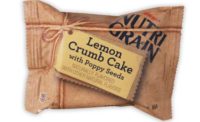By: Jorge Izquierdo, vice president of market development, PMMI
Protecting shelf life ensures consumers receive fresh, wholesome snack foods and baked goods, and it prevents premature staling and spoilage, protects brand reputation, and reduces food waste. Thanks to consumer trends including a shift to on-the-go servings and more sustainable packaging, shelf life is increasingly important, yet it can be challenging to implement. How can producers and CPGs meet customer needs in an evolving market?
New solutions for freshness
With increasingly stringent health and safety legislation, and producers looking to increase the shelf life of their products, it has never been more important for packaging to be closed and sealed correctly, according to the 2022 PMMI State of the Industry, “U.S. Packaging Machinery Report,” published by PMMI Business Intelligence. Simply stated, good seals are essential to package integrity and freshness preservation.
Sometimes seal integrity alone is not sufficient to maintain shelf life. Barrier materials may be needed to protect the product from oxidation, water loss or gain, and microbial growth. Oxygen and moisture barriers can be provided by material thickness, a barrier layer or coating, or metallizing. For multi-serving products, resealability can help maintain product freshness after the package is opened. Resealability options include press-to-close or slider zippers, twist ties, and peel/reseal labels or flaps.
Flushing with nitrogen before sealing is another product-protecting tactic. The shelf life of especially sensitive products can be extended with the addition of a food-grade desiccant or oxygen absorber packet. These active packaging elements sometimes can be built into the substrate and help processors address the demand for clean-label products that eliminate preservatives and artificial ingredients from their recipes.
Flexibility is key
As snack food producers and wholesale bakers transition to more sustainable materials, it’s important to select wrapping and form-fill-seal equipment that’s flexible enough to achieve good seals regardless of whether the substrate is downgauged, contains recycled content, or offers some other sustainability feature. Seal integrity requires optimization of heat, pressure, and dwell time and/or the ability to run cohesive material. Offline testing of samples pulled periodically from the line or 100% inline inspection provides assurance of seal quality. The most advanced machines monitor heat, pressure, and dwell time and adjust those parameters as needed.
Given how often product lineups and packaging formats change, machine flexibility is vital. Rapid changeover is essential, as are machine designs that are future-proofed to handle new materials that arrive in the marketplace, according to “Key Challenges for Packaging and Processing Operations,” a whitepaper based on discussions at PMMI’s Top to Top Summit in 2021. With more sustainable materials becoming available and new innovations being developed, processors must have equipment that can not only accommodate today’s solutions, but also be ready for tomorrow’s.
Packaging lines also must be flexible enough to handle a growing array of SKUs. These can range from single-serving to variety packs, or they can reflect demands from retailers for exclusive packaging variations, the preferences of different demographic groups, and the still-expanding use of e-commerce, one of the top channels for snack food sales. Equipment flexibility will allow producers to meet these changing expectations and still protect the shelf life of their products.
Extended shelf life benefits all stakeholders. Processors often can expand distribution to new markets and boost sales. For retailers, longer shelf life means a sellable product can remain on store shelves longer, reducing restocking frequency and losses associated with out-of-date product. For consumers, extended shelf life makes it easier to maintain a stocked pantry. It also reduces the amount of food that ends up in the trash.
Find solutions at PACK EXPO International
It is more important than ever that the packaging and processing industries come together to share insights and innovations, and the best place to do that is PACK EXPO International (Oct. 23–26, 2022; McCormick Place, Chicago)—the most comprehensive packaging and processing show in the world in 2022. From connecting with colleagues and hearing from experts to seeing new technologies, materials, and machinery-in-action, PACK EXPO International is the most efficient and effective way to discover packaging and processing solutions for over 40 vertical markets. No other event this year will showcase entire production line solutions and offer attendees everything needed to compete in a changing marketplace. For more information and to register, visit packexpointernational.com.







